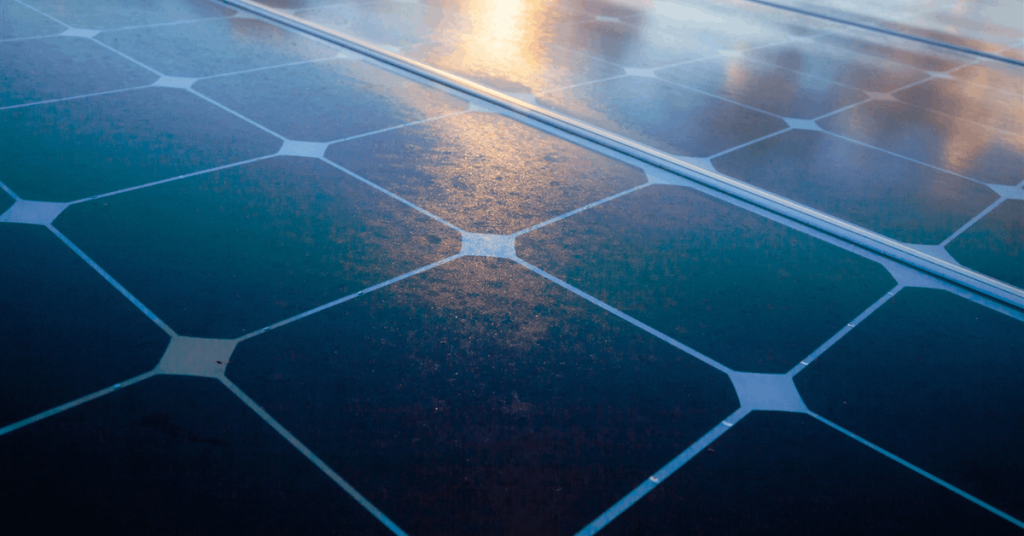QatarEnergy has contracted Samsung C&T Corp to construct the 2,000-megawatt (MW) Dukhan solar power plant, which would more than double Qatar’s solar generation capacity.
The state-owned global energy major expects the two-phase project to start up 1,000 MW by 2028. The second phase is expected to be completed mid-2029, QatarEnergy said in a press release.
“When completed, the Dukhan solar power plant along with Al-Kharsaah, Mesaieed, Ras Laffan solar power plants will help reduce carbon dioxide emissions by about 4.7 million tons annually, while contributing up to 30 percent of Qatar’s total peak electricity demand”, said QatarEnergy president and chief executive Saad Sherida Al-Kaabi, who is also Qatar’s energy minister.
Neither QatarEnergy nor Samsung C&T disclosed the value of the contract.
“The new plant will utilize a solar tracker system and will enhance efficiency by installing inverters capable of operating flawlessly in a high-temperature environment”, QatarEnergy said.
The plant will rise about 80 kilometers (49.71 miles) west of Doha, it said.
Earlier this year QatarEnergy put online two of the Gulf state’s three operational solar facilities, adding a combined capacity of 875 MW.
The projects in the industrial cities of Mesaieed and Ras Laffan raise Qatar’s solar power production capacity to 1,675 MW, QatarEnergy said April 28.
Qatar aims to raise the share of renewable energy in its natural gas-dominated power mix from the current five percent to 18 percent by 2030, as declared in the Qatar National Renewable Energy Strategy released April 27, 2024. The strategy focuses on solar generation.
Qatar’s other operational solar facility is the 800-MW Al-Kharsaa plant, which was put onstream 2022. The facility is owned by QatarEnergy, Marubeni Corp and TotalEnergies SE through the joint venture Siraj 1.
The three solar plants are expected to cover about 15 percent of total peak power demand, Al-Kaabi said April 28.
“We have moved beyond relying on the expertise of others for the construction, operation and maintenance of solar power plants, and have begun implementing such projects using our own national expertise”, Al-Kaabi said.
According to the renewables strategy prepared by Qatar General Electricity and Water Corp (Kahramaa), Qatar relies on gas-powered thermal plants for over 90 percent, or 11.3 GW, of its total power production.
“However, the expected commissioning of 2.2 GW of new thermal electricity generation by 2027 is an indication of the country’s gradual approach for integrating renewable energy in its power mix”, Qatar’s sole power and water transmission and distribution operator said.
“Qatar has tremendous potential to increase its use of renewable energy sources due to the high quality of the nation’s solar resource”, Kahramaa said. “The country’s global horizontal irradiance (GHI) level is one of the highest in the world, with ten locations having a four-year average GHI rating of more than 2,000 kWh [kilowatt hours] generated per square meter per year”.
To contact the author, email jov.onsat@rigzone.com
What do you think? We’d love to hear from you, join the conversation on the
Rigzone Energy Network.
The Rigzone Energy Network is a new social experience created for you and all energy professionals to Speak Up about our industry, share knowledge, connect with peers and industry insiders and engage in a professional community that will empower your career in energy.
element
var scriptTag = document.createElement(‘script’);
scriptTag.src = url;
scriptTag.async = true;
scriptTag.onload = implementationCode;
scriptTag.onreadystatechange = implementationCode;
location.appendChild(scriptTag);
};
var div = document.getElementById(‘rigzonelogo’);
div.innerHTML += ” +
‘‘ +
”;
var initJobSearch = function () {
//console.log(“call back”);
}
var addMetaPixel = function () {
if (-1 > -1 || -1 > -1) {
/*Meta Pixel Code*/
!function(f,b,e,v,n,t,s)
{if(f.fbq)return;n=f.fbq=function(){n.callMethod?
n.callMethod.apply(n,arguments):n.queue.push(arguments)};
if(!f._fbq)f._fbq=n;n.push=n;n.loaded=!0;n.version=’2.0′;
n.queue=[];t=b.createElement(e);t.async=!0;
t.src=v;s=b.getElementsByTagName(e)[0];
s.parentNode.insertBefore(t,s)}(window, document,’script’,
‘https://connect.facebook.net/en_US/fbevents.js’);
fbq(‘init’, ‘1517407191885185’);
fbq(‘track’, ‘PageView’);
/*End Meta Pixel Code*/
} else if (0 > -1 && 70 > -1)
{
/*Meta Pixel Code*/
!function(f,b,e,v,n,t,s)
{if(f.fbq)return;n=f.fbq=function(){n.callMethod?
n.callMethod.apply(n,arguments):n.queue.push(arguments)};
if(!f._fbq)f._fbq=n;n.push=n;n.loaded=!0;n.version=’2.0′;
n.queue=[];t=b.createElement(e);t.async=!0;
t.src=v;s=b.getElementsByTagName(e)[0];
s.parentNode.insertBefore(t,s)}(window, document,’script’,
‘https://connect.facebook.net/en_US/fbevents.js’);
fbq(‘init’, ‘1517407191885185’);
fbq(‘track’, ‘PageView’);
/*End Meta Pixel Code*/
}
}
// function gtmFunctionForLayout()
// {
//loadJS(“https://www.googletagmanager.com/gtag/js?id=G-K6ZDLWV6VX”, initJobSearch, document.body);
//}
// window.onload = (e => {
// setTimeout(
// function () {
// document.addEventListener(“DOMContentLoaded”, function () {
// // Select all anchor elements with class ‘ui-tabs-anchor’
// const anchors = document.querySelectorAll(‘a .ui-tabs-anchor’);
// // Loop through each anchor and remove the role attribute if it is set to “presentation”
// anchors.forEach(anchor => {
// if (anchor.getAttribute(‘role’) === ‘presentation’) {
// anchor.removeAttribute(‘role’);
// }
// });
// });
// }
// , 200);
//});

